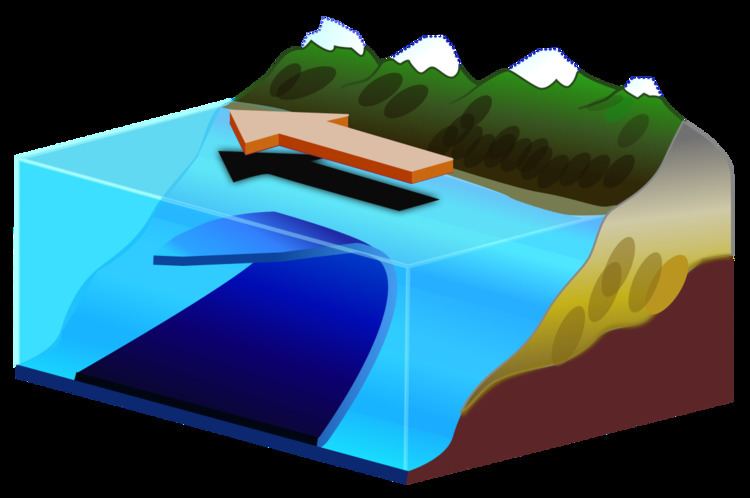 | ||
The following are considered essential ocean climate variables by the Ocean Observations Panel for Climate (OOPC) that are currently feasible with current observational systems .
Contents
Atmosphere surface
Air Temperature
Precipitation (meteorology)
evaporation
Air Pressure, sea level pressure (SLP)
Surface radiative fluxes
Surface thermodynamic fluxes
Wind speed and direction
Surface wind stress
Water vapor
Ocean surface
Sea surface temperature (SST)
Sea surface salinity (SSS)
Sea level
Sea state
Sea ice
Ocean current
Ocean color (for biological activity)
Carbon dioxide partial pressure (pCO2)
Ocean subsurface
Accuracy of measurements
The quality of in situ measurements is non-uniform across space, time and platforms. Different platforms employ a large variety of sensors, which operate in a wide range of often hostile environments and use different measurement protocols. Occasionally, buoys are left unattended for extended periods of time, while ships may involve a certain amount of the human-related impacts in data collection and transmission. Therefore, quality control is necessary before in situ data can be further used in scientific research or other applications. This is an example of quality control and monitoring of sea surface temperatures measured by ships and buoys, the iQuam system developed at NOAA/NESDIS/STAR, where statistics show the quality of in situ measurements of sea surface temperatures.
One of the problems facing real-time ocean observatories is the ability to provide a fast and accurate assessment of the data quality. Ocean Networks Canada is in the process of implementing real-time quality control on incoming data. For scalar data, the aim is to meet the guidelines of the Quality Assurance of Real Time Oceanographic Data (QARTOD) group. QARTOD is a US organization tasked with identifying issues involved with incoming real-time data from the U.S Integrated Ocean Observing System (IOOS). A large portion of their agenda is to create guidelines for how the quality of real-time data is to be determined and reported to the scientific community. Real-time data quality testing at Ocean Networks Canada includes tests designed to catch instrument failures and major spikes or data dropouts before the data is made available to the user. Real-time quality tests include meeting instrument manufacturer’s standards and overall observatory/site ranges determined from previous data. Due to the positioning of some instrument platforms in highly productive areas, we have also designed dual-sensor tests e.g. for some conductivity sensors. The quality control testing is split into 3 separate categories. The first category is in real-time and tests the data before the data are parsed into the database. The second category is delayed-mode testing where archived data are subject to testing after a certain period of time. The third category is manual quality control by an Ocean Networks Canada data expert.
Historical data available
OceanSITES manages a set of links to various sources of available ocean data, including: the Hawaiian Ocean Timeseries (HOT), the JAMSTEC Kuroshio Extension Observatory (JKEO), Line W monitoring the North Atlantic's deep western boundary current, and others.
This site includes links to the ARGO Float Data, The Data Library and Archives (DLA), the Falmouth Monthly Climate Reports, Martha's Vineyard Coastal Observatory, the Multibeam Archive, the Seafloor Data and Observation Visualization Environment (SeaDOVE): A Web-served GIS Database of Multi-scalar Seafloor Data, Seafloor Sediments Data Collection, the Upper Ocean Mooring Data Archive, the U.S. GLOBEC Data System, U.S. JGOFS Data System, and the WHOI Ship Data-Grabber System.
There are a variety of data sets in a data library listed at Columbia University:
This library includes:
In situ observations spanning from the early 1700s to present are available from the International Comprehensive Ocean Atmosphere Data Set (ICOADS).
This data set includes observations of a number of the surface ocean and atmospheric variables from ships, moored and drifting buoys and C-MAN stations.
In 2006, Ocean Networks Canada began collecting high-resolution in-situ measurements from the seafloor in Saanich Inlet, near Victoria, British Columbia, Canada. Monitoring sites were later extended to the Strait of Georgia and 5 locations off the West coast of Vancouver Island, British Columbia, Canada. All historical measurements are freely available via Ocean Networks Canada's data portal, Oceans 2.0.
Future developments
Areas requiring research and development
The future of oceanic observation systems:
